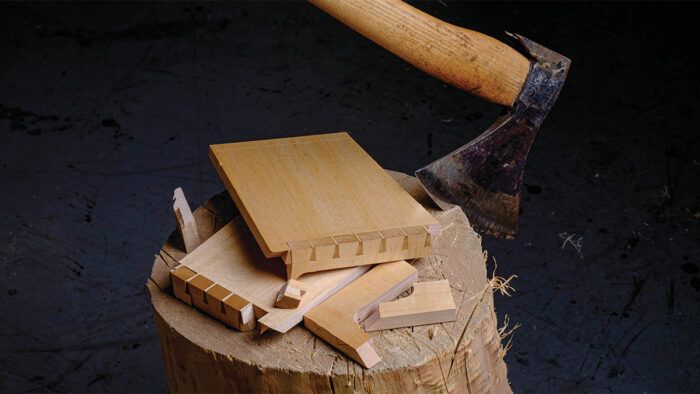My mistake
Nobody likes to make mistakes, but most of us probably don't deal with them as drastically as does Vasko Sotirov.
Mistakes. We all make them, we all hate them. I can’t seem to accept mine. It’s what a mistake represents that bugs me so much—a poorly made choice; a distraction; a lack of control, focus, and discipline.
Woodworking is the medium through which my ideas and feelings take shape, so it’s all very personal. During the process of creating something, I establish a strong connection with the piece, and a mistake is effectively a scar in this relationship reminding me of how I didn’t put 100% into what I was doing.
Whenever I make something for a client, it is like helping them get to a destination. The most significant thing for them is to arrive somewhere specific. That is important for me as well, but even more vital to me is the journey. Was it an interesting trip? Did I enjoy it? Did I explore new roads? Have I gone the wrong way? For me, a great woodworking trip is one that leads to a piece as flawless as my hands are able to create. Elegant solutions and precise executions—the kind of stuff that puts a smile on your face.
Theoretically, it is possible to reduce errors to a number close to zero. But sometimes we do commit them. I deeply dislike fixing mistakes, because that bond I feel with my creation has been compromised. I therefore prefer to start over, remake the faulted piece or component from scratch, and eradicate the problem completely.
This might lead to a considerable amount of work, but I would go this route at almost any cost. Not doing so just makes me feel bad about myself. It’s not that I couldn’t disguise the mistake. Most mistakes could be fixed so no one would ever notice them—except the severest of my critics, me.
Sometimes I make a mistake that compromises the whole piece I’m working on; then something interesting happens: Having invested so much labor and material in the piece, I’m really hurt by the idea of starting over. Part of me wants to just fix it and go on. But past experiences have taught me that’s not really what I desire. In order to interrupt this residual connection, I destroy the piece.
A little hatchet and a tree stump are usually what it takes to restart. It’s a symbolic way to let go of what I no longer like and to start from zero again. It’s the end of all connection between me and the materialization of my mistakes. There’s no anger involved with this process, just a quick and fun action that serves as a visual reminder for me to do better next time.
I am not suggesting that this is the proper way for others to deal with mistakes. In fact, I truly believe it’s the exact opposite. It would probably be better just to fix the thing and go on. Starting over is not a practical, rational, or convenient decision; it’s just what my heart tells me to do.
Some might feel stressed or even paralyzed by the thought that no mistakes are allowed. But that knowledge makes me feel stimulated and incentivized to give my best.
Vasko Sotirov works wood in Bergamo, Italy. Projects of his that didn’t go under the ax can be found on the front cover of FWW #296 and the back cover of FWW #301.
Photo: Vasko Sotirov
 |
Build a small box with mitered dovetails |
 |
Editor’s letter: The fear of failure |
 |
From the archive: Dealing with woodworking mistakes |
Fine Woodworking Recommended Products

Stanley Powerlock 16-ft. tape measure

Starrett 12-in. combination square

Suizan Japanese Pull Saw























Comments
As you say in your fifth paragraph, it might lead to a considerable amount of work, but it seems to me to lead to a considerable amount of wasted wood and wasted money. Why not just cut it apart and save the wood for another project, even if it might just be for test cuts or sneaking up on blade depth. Sounds like anger management to me.
Log in or create an account to post a comment.
Sign up Log in